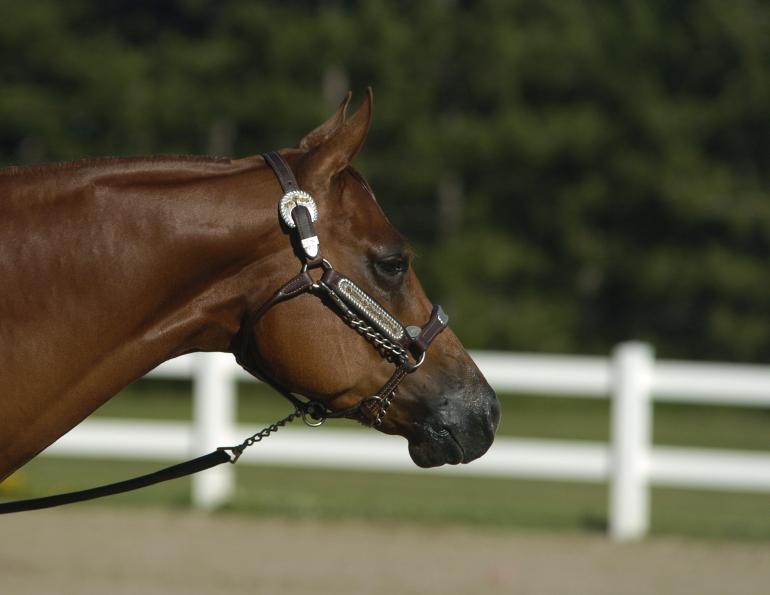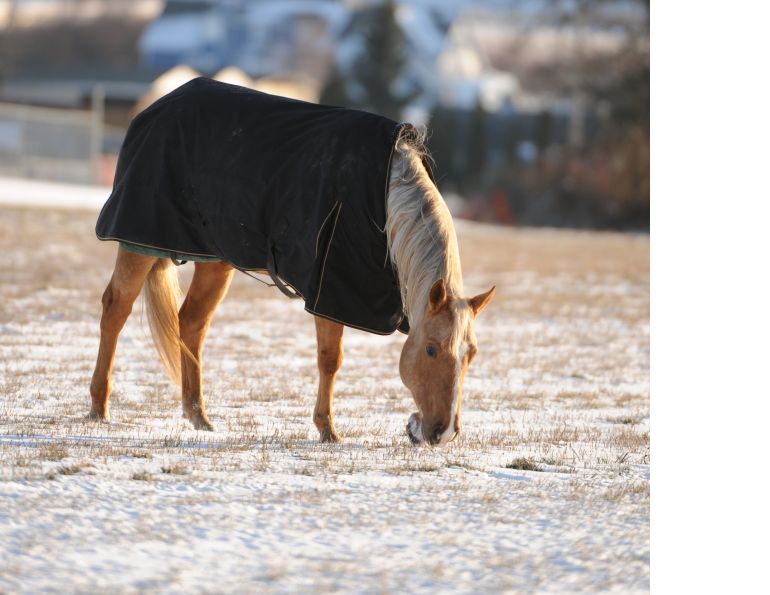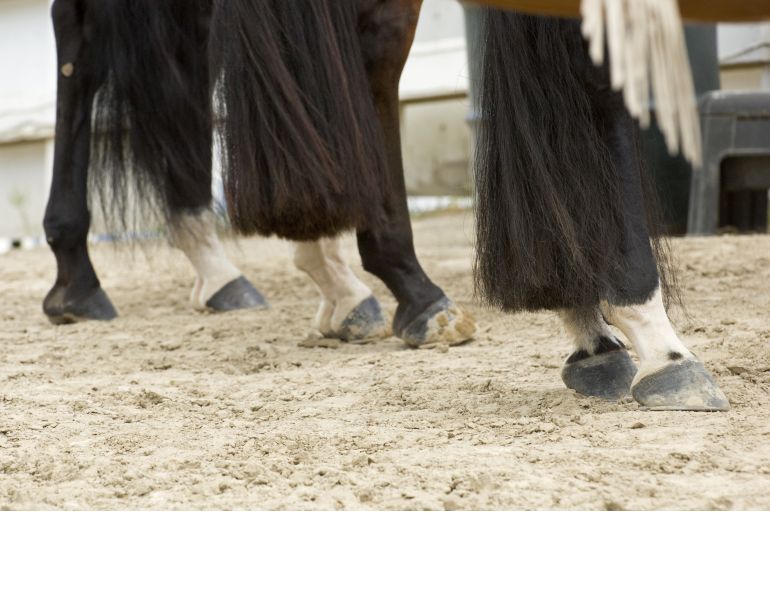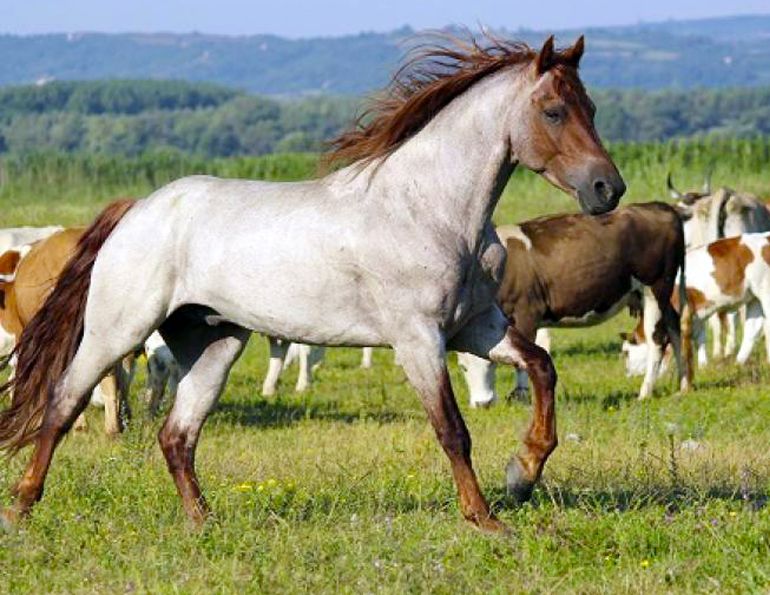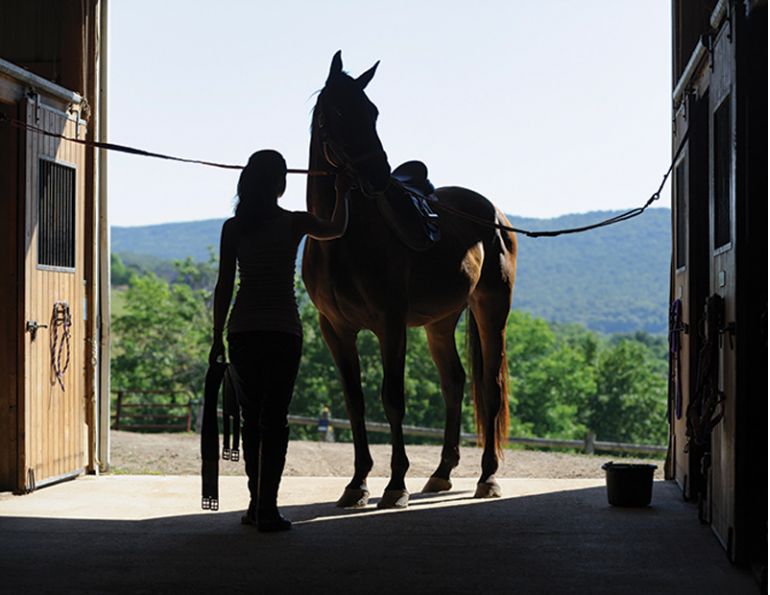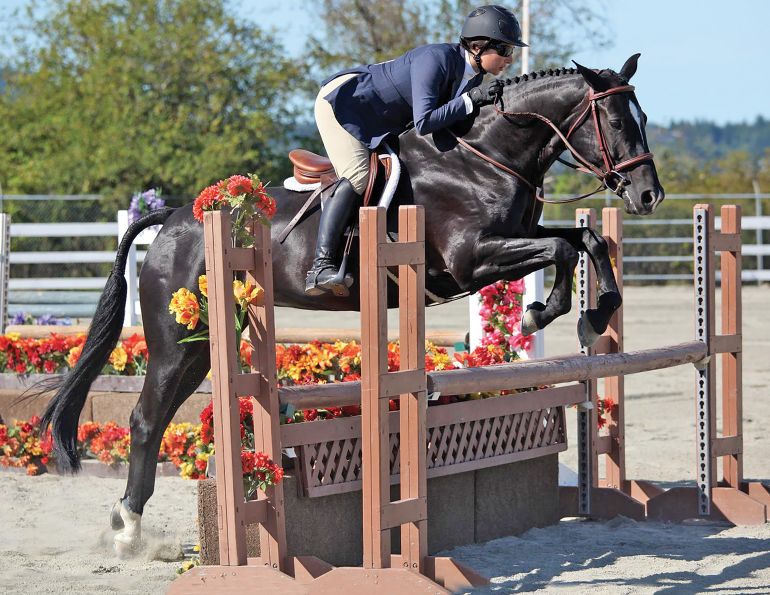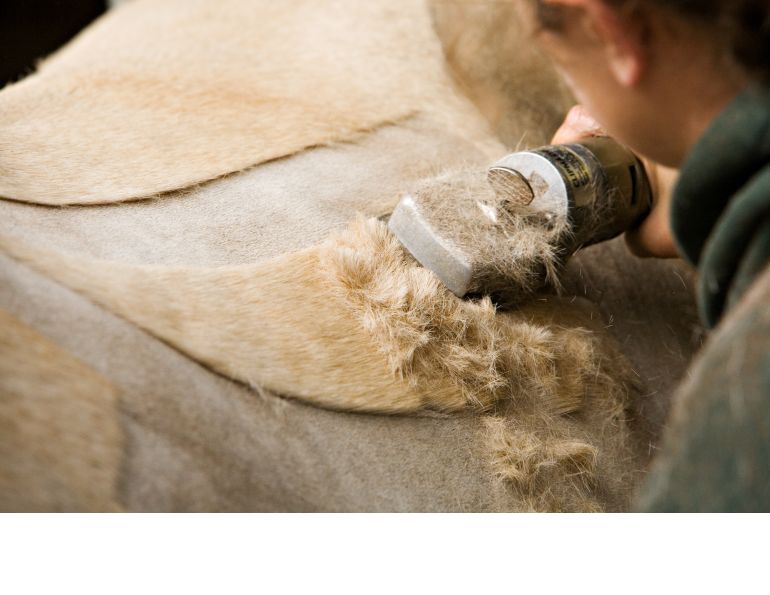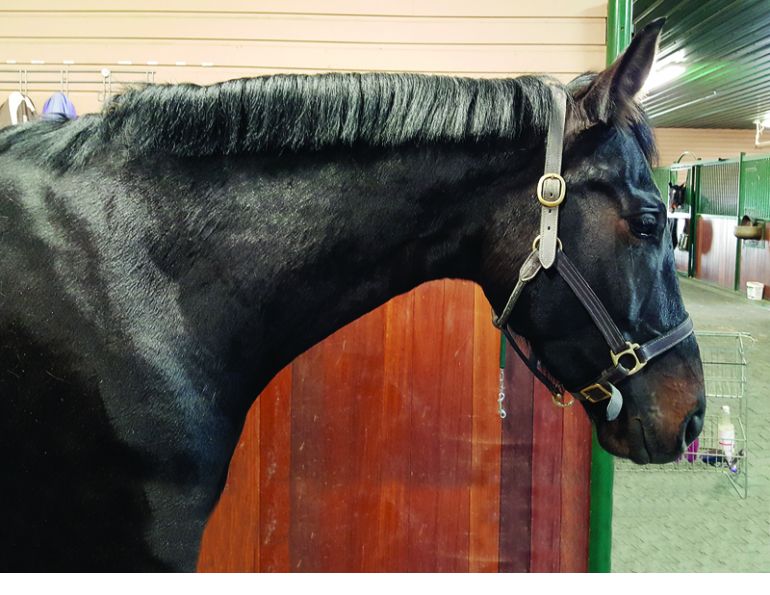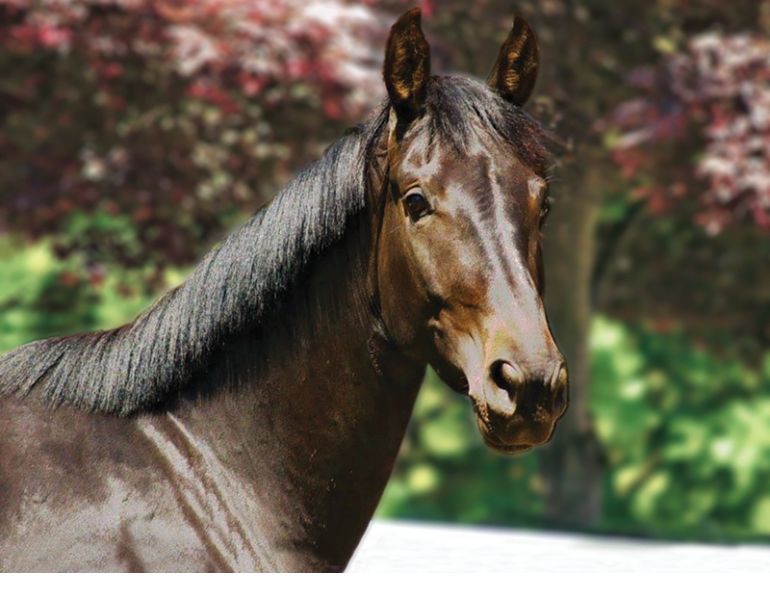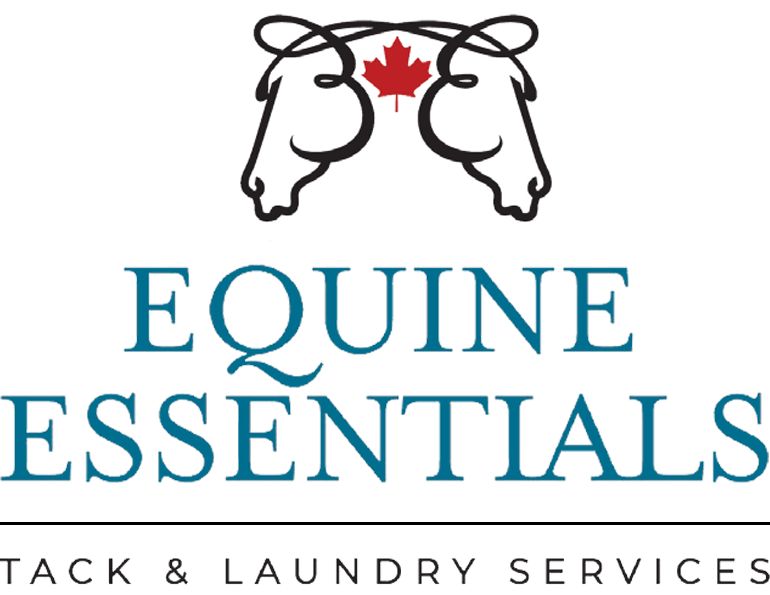By Melanie Huggett
For horse people, nothing is more beautiful than a horse with a gleaming, dappled coat and a freely flowing mane and tail. Creating such a look is not impossible, but does require some effort. Following are nine tips for making your horse both eye-catching and the picture of health, all year round.
1. Start from the inside out - No amount of grooming will fix a coat that is dull due to lack of nutrition. “A good feeding program is really the beginning of it all,” says Norma Siebert, owner of Windsum Enterprises Ltd. in Langley, BC and a regular competitor in Western performance and American Quarter Horse Association shows. “Their hair coat all comes from the inside out.”
Begin by feeding a well-balanced diet appropriate for the horse’s age, size, and activity level. In particular, protein, copper, zinc, and vitamin A are keys to a shiny, healthy coat.
“Start with good hay. If you’re feeding local hay and your horse doesn’t look good, you need to address whether the quality of the feed is sufficient,” says Siebert. “It’s just like any athlete: if you live off instant noodles, you might not win the marathon.”
A dull, rough coat can be a sign of parasites. Deworm regularly to ensure your horse’s feed is going to your horse, not little worms in his gut. Talk to your veterinarian about creating a deworming routine that will keep your horse’s digestive system healthy - and his coat looking its best.
Finally, for a little extra gleam, consider adding oil to the horse’s feed. Liquid oils, such as canola or soybean oil, flax seed, which contains high levels of Omega-3 fatty acids, and rice bran, which is 12 to 13 percent oil, are all popular supplements.
2. Curry and flick - Begin your grooming sessions with a good rub with a currycomb. Siebert prefers the rubber type of curry with small teeth, while Michelle Bion, a groom for top American show jumper Rich Fellers, prefers a mitt. Using a firm pressure, rub the curry in a circular pattern from the front of the horse to the back.
Currying stimulates the sebaceous glands in the horse’s skin, which will release oil onto the horse’s coat. These oils are what make the coat lie flat and shine.
“Currying just seems to be the answer [to a nice looking coat],” says Siebert. “It gets the oil up, loosens up any dander, and loosens out any dirt. Then you can brush off the excess.”
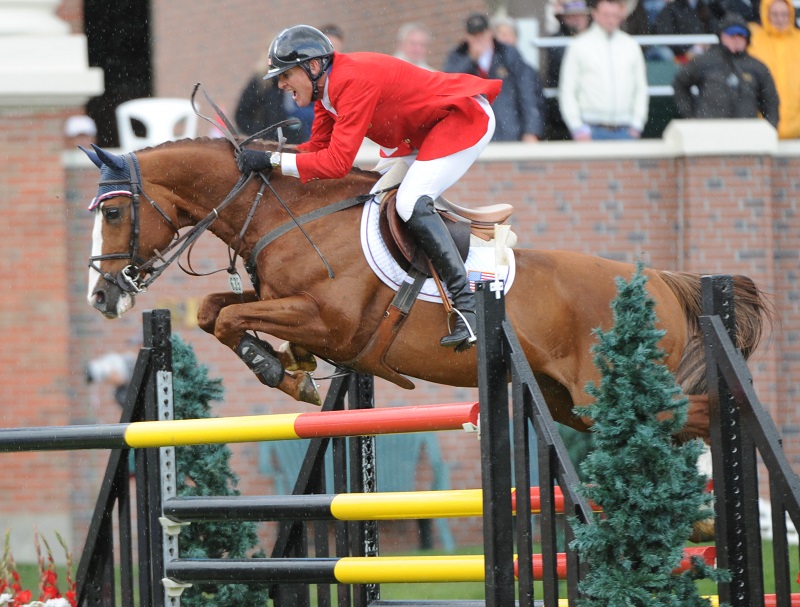
Michelle Bion, who grooms for top American show jumper Rich Fellers, curries the horses in her care before and after they are ridden, and after they come in from the pastures so they always go into their stalls clean. Photo: Robin Duncan Photography
After currying, flick away any dirt left on the coat with a stiff bristled dandy brush. Bion prefers a brush with long bristles, which helps flick the dirt away easily.
Finish up by going over the entire coat with a soft body brush or towel to spread the oils released by currying.
It’s impossible to go overboard with grooming. The more you curry, the more improvement you will see in the horse’s coat. “I groom the horses before they get ridden, after they are ridden, and after they come in from being turned out in the pastures. They always go into their stalls clean,” says Bion.
3. Don’t bathe often - Unlike with grooming, bathing too often will dull the coat by stripping it of its natural oils. Therefore, avoid bathing as part of your regular grooming routine; instead, save it for when your horse is especially dirty or for special occasions.
Both Bion and Siebert only bathe before shows.
“I don’t bathe regularly,” says Siebert. “I will occasionally bathe — it’s a warm water bath — for halter and showmanship competitions. Normally, though, I give a good curry, knock the dirt off, saddle up, and away we go!”
If you do bathe, apply a conditioner which contains humectants (moisturizers) or natural oils so the hairs don’t become dry and brittle. A moisturizing conditioner will help lock moisture into the hair, while oils will replace some of the natural oils lost during shampooing.
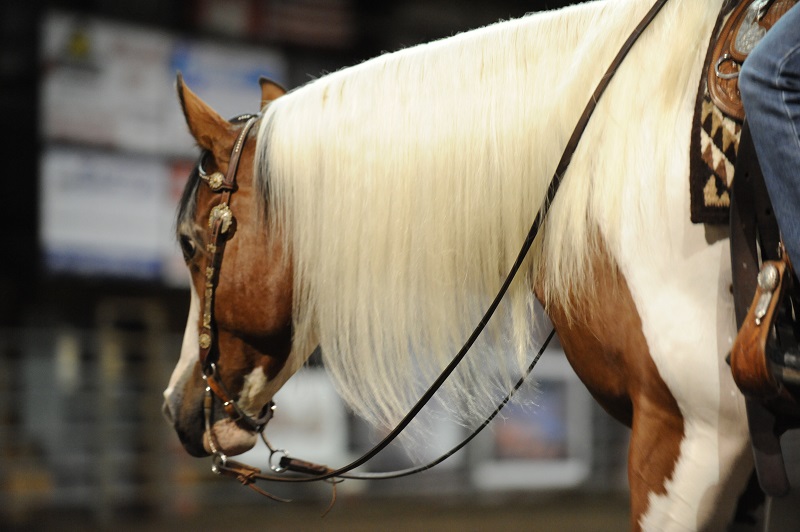
Keep long, thick manes well conditioned and plait them in long braids to prevent tangles. Photo: Robin Duncan Photography
Applying conditioner to manes and tails is also a good idea to make them silky and less likely to tangle. “I like the leave-in conditioner for manes and tails,” says Siebert. However, if you are going to braid or band, avoid adding conditioner to the mane, as it will make the hairs slippery.
4. Tend to the tail - Regular maintenance will produce a tail that looks ready for the show ring any day.
“Some people learn that not brushing a tail is good for them. I disagree,” says Bion. “I brush my horses’ tails everyday.”
Brushing the tail does require some care, however, as yanking or pulling with a brush or comb will break the tail hairs.
“Lots of people take a brush and they break the tail off,” says Siebert. “I slowly comb the tail out so I don’t pull all the hairs out.”
“I use a detangler every day and brush from the bottom to the top being careful to not pull out hairs,” says Bion.
If your horse’s tail is so long that the horse pulls out hairs when he rolls or walks, or the tail is starting to look ratty, then trim it shorter or consider using a tail wrap or braid.
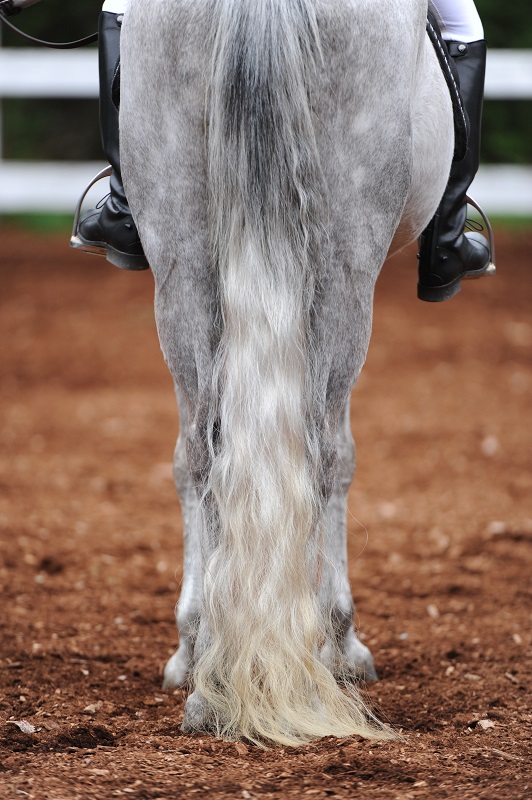
Comb your horse's tail with care so as to avoid pulling out hairs,a nd braid long tails up in a tail sock to protect them. Photo: Robin Duncan Photography
“I cut horses’ tails whenever they are looking shaggy,” says Bion. “I like them to be cut somewhere between their fetlocks and the hocks.”
“Trim it so they don’t step on it,” says Siebert. “For some horses, I use a tail sock with the tail braided in it. Using a leave-in conditioner plus a brain-in tail wrap will protect the tail.”
5. Tame the mane - Whether your horse has a short mane like a hunter/jumper or a long, full mane like a reiner, keeping it looking its best requires some effort.
“Since I braid manes (for shows), I have to keep them thin and short, so they get pulled every three weeks,” says Bion. “Every time I groom, I wet the horse’s mane over to the right side to keep it on the right side.”
“If the horse’s mane is thin enough, I use thinning shears just to shorten it. If it’s a thick mane, then I will pull it to make it easier to band,” says Siebert.
To pull a mane, separate a section of hair about three inches wide. Hold the longest hairs with your hand, and backcomb the rest of the hair up towards the top of the neck with the pulling comb. Then wrap the long hairs in your hand around the comb. Tug the comb down sharply so the hairs are pulled out at the roots. Brush the section you have just pulled out again, and repeat the process until the mane is the length and thickness you desire.
If you own a reiner or a breed such as a Friesian or Andalusian with a long, thick mane, keep it conditioned and plaited in long braids to keep it healthy and free from tangles.
“My reiner doesn’t get his mane pulled or shortened. I just use a conditioner,” says Siebert.
6. Clip for show - Regardless of what discipline you show in, clipping the head and legs will give the horse a neat and tidy appearance.
“I always clip their whiskers, legs, bridle path and ears before competition,” says Bion.
Clipping white areas will help keep a horse clean, advises Siebert. “A week before a show I clip their socks. It gives the hair time to grow out and make it easier to clean up because there’s not so much to stain,” she says. “You don’t want it clipped to pink — you want it white — you want to leave it long enough to keep it clean and nice.” Even for horses with dark legs, keeping the leg and fetlock hair short means there is less hair to pick up dirt and debris.
For horses with white markings on the head, Siebert clips them just once before show season. “I clip with a #10 blade and I clip their blaze — not the rest of their head, just their blaze. I usually do that at the beginning of the show season and then I don’t have to do it again.”
7. Lights on - To keep her horse’s coats ready for the show ring at any time of year, Siebert uses lights to keep her horses’ coats short instead of body clipping.
“My horses are under lights so they don’t get the winter coat that lots of other horses deal with,” says Siebert. “But it depends on what you have for a facility. If you have a horse out in a paddock 24/7, then they need their hair to stay warm.”

Norma Siebert, a regular competitor in Western performance and AQHA shows, uses lights to keep her horses' coats short instead of body clipping. Photo: Don Trout Photography
By exposing her horses to 16 hours of light each day, the horses’ coats are tricked into thinking it’s always summer, so they don’t grow a winter coat. Using 100 watt bulbs, the lights are on from 6 to 7 am before the horses are turned out for the day, and then from when they are brought in at night until 11 pm. Siebert uses a timer to make it easier to keep the lights on consistently.
“The hardest time is when you’re traveling in the fall to horse shows. The lights out time at the show barns is earlier. So those who want to show throughout the year need to pack the lights and timers to use at the show if they don’t want to have to body clip.”
Keep in mind that if your horse is kept with a short coat — whether from lights or from body clipping — you will need to blanket the horse on chilly days. “I compare my clothing to theirs; in the winter, if I have a couple of layers of down on, then my horses have a couple layers of blankets on.
You don’t want so much they are sweating under their blankets, but you don’t want them getting a chill either.”
8. Use sun protection - Just like with humans, the summer sun can cause damage to hair and skin, causing colour bleaching and burns.
“So they never get sunburn, I keep blankets on my horses. Even in the hot days of summer they will have something on them, such as a fly sheet. If it’s too hot, I’ll bring them in during the heat of the day and then turn them out later when it’s cooler,” says Siebert.
For horses with dark coats, such as blacks or dark browns, keeping the horse covered in a light sheet is the best way to keep their coat from bleaching when out in the sun.
Sunscreen can also be used to stop burns and bleaching. “I really like Santa Fe spray (by Absorbine),” says Siebert. “It has a sunscreen in it. I’ll put that on the top of their tail and their mane when they’re turned out to stop their hair from bleaching.”
For grey horses or those with pink skin, sunscreen or an extended fly mask is especially important to avoid painful burns and blisters from UV rays.
9. Think outside the tack box - When it comes to keeping a horse clean and polished looking - especially in those last moments before entering the show ring — sometimes you have to think outside the tack box.
Siebert always keeps a box of baby wipes handy for last minute touch-ups. “Baby wipes will fix a white spot that’s not white, clean a nose, shine your boots, clean a halter — they’re an important part of any grooming bag headed to the show.”
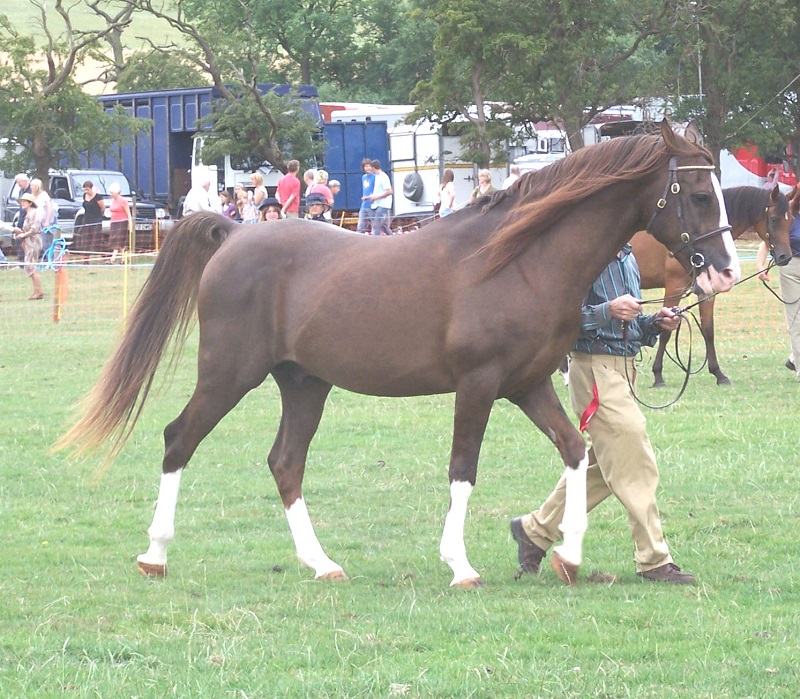
Corn starch and baby powder dustred on your horse's white socks can make them gleam in the show ring.
For keeping whites white, Siebert likes a warm bath with lemon dish detergent. “It has to be the environmentally friendly type,” she says, “because so many wash racks drain into creeks.” But, she adds, “if things go south and you’re out of time, there are lots of different whitening products: corn-starch, baby powder, white spray coat.”
Bion has her own special trick for last-minute touch-ups. “If they sleep in their manure and I don’t have time to wash them, I use rubbing alcohol with a towel. I spray the towel (with the alcohol) and rub the stains out. I have never found any other product that works better.”
For removing dust, Bion uses witch hazel. “If, after you have your horse all brushed, you feel like that layer of dust is still there, you can take a towel and spray the towel with witch hazel and wipe the towel over the body, or just spray the witch hazel directly onto the horse and wipe it with the towel.”
Main Photo: Clipping the whiskers, bridle path, and ears before a competition gives the horse's head a neat, tidy, polished appearance. Credit: River Bend Designs



